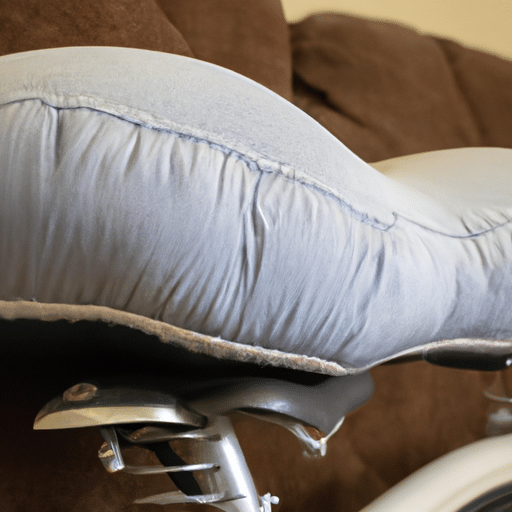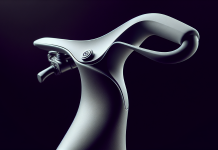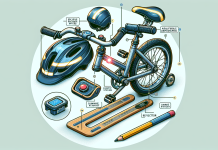Are you tired of having an uncomfortable ride on your cruiser bike and are seeking ways to make it more comfortable? Look no further! This article will uncover some simple yet effective tips and tricks to enhance your riding experience.
Whether adjusting the seat height, adding cushioned handlebar grips, or upgrading your saddle, we’ve got you covered. Say goodbye to those sore muscles and hello to a smooth and enjoyable ride on your cruiser bike. Let’s dive in and discover how to achieve the utmost comfort for your biking adventures!
Table of Contents
Choosing the Right Bike Frame
When choosing the right bike frame, there are a few factors to consider. One of the most important considerations is the frame size. A bike frame that is too small or too large can lead to discomfort and even injury. To determine the correct frame size, it is recommended to consult a professional or use an online sizing guide.
Another aspect to consider when selecting a bike frame is whether or not to opt for a suspension frame. Suspension frames are equipped with shock absorbers, which can help absorb the impact of bumps and uneven terrain, providing a smoother and more comfortable ride. While suspension frames may add weight to the bike, they can significantly enhance ride quality, especially on rough roads or off-road trails.
Adjusting Handlebar Position
The position of the handlebars plays a crucial role in the overall comfort of your bike. Adjusting the handlebar position allows you to find the sweet spot that suits your riding style and body posture. One adjustment to consider is raising or lowering the handlebars. Raising the handlebars can provide a more upright riding position, reducing strain on your neck and back. On the other hand, lowering the handlebars can increase aerodynamics and offer a more aggressive riding stance.
In addition to adjusting the height of the handlebars, you can also tweak the handlebar angle. Experimenting with different angles can help you find the most comfortable position for your wrists and hands. Some riders prefer a slight upward tilt for a more ergonomic grip, while others may opt for a flat or downward angle. Testing different angles and listening to your body to determine what feels most comfortable is essential.
Optimizing Seat Position
One of the key contributors to comfort on a bike is the seat position. Properly adjusting the seat height and position can significantly improve your riding experience. To adjust the seat height, start sitting on the bike with your feet flat. Your knees should be slightly bent when the pedal is at its lowest point. Adjust the seat height accordingly to ensure proper leg extension while pedaling.
In addition to seat height, the fore/aft position of the seat also plays a role in comfort. Sit on the bike and place your feet on the pedals to find the optimal seat position. Align the pedals horizontally, and as a general guideline, the front of your knee should be directly over the pedal axle. Fine-tune the seat position by sliding it forward or backward until you achieve the desired alignment.
Upgrading the Seat
If your current seat is causing discomfort even after adjusting its position, it may be worth considering an upgrade. Choosing a broader, more cushioned seat can help alleviate pressure points and provide a more comfortable ride. Look for seats designed explicitly for cruiser bikes, which are typically wider and offer more padding.
Another option to enhance seat comfort is to add a gel seat cover. These covers are made from a gel-like material that molds to your body, providing extra cushioning and reducing pressure on sensitive areas. Gel seat covers are relatively inexpensive and easy to install, making them popular among riders looking to improve their bike’s comfort.
Installing Ergonomic Grips
Hand and wrist discomfort can be expected when riding a bike, especially on longer rides. To alleviate this discomfort, consider installing ergonomic grips on your handlebars. Ergonomic grips are specially designed to provide additional support and relieve pressure on your hands.
When choosing ergonomic grips, look for ones that are ergonomically shaped to fit the natural contours of your hands. These grips often have a larger surface area and may feature cushioning or textured surfaces for improved grip and comfort. Once you have installed the grips, adjust their position to align with the shape of your hands and provide optimal support.
Using a Suspension Seatpost
A suspension seatpost is another accessory that can significantly enhance the comfort of your cruiser bike. This component is designed to absorb shocks and vibrations, providing a smoother ride by reducing the impact on your lower back and spine. Investing in a quality suspension seatpost can make a significant difference, mainly when riding on uneven surfaces or rough terrain.
When installing a suspension seatpost, choose one that matches the specifications of your bike frame. Adjusting the seat post’s settings, such as the tension or preload, can also customize the level of the suspension according to your preference. Experiment with different settings to find the optimal balance between comfort and performance for your riding style.
Adding Cushioned Pedals
Pedal comfort may be overlooked, but it can make a noticeable difference in the overall comfort of your bike. If your feet are uncomfortable or developing hot spots during rides, consider upgrading to cushioned pedals. These pedals are designed with extra padding, providing cushioning and reducing pressure on your feet.
Furthermore, another option to consider is adding toe clips or straps to your pedals. These accessories can help secure your feet to the pedals, allowing for a more efficient power transfer. When using toe clips or straps, make sure they are adjusted correctly to avoid any discomfort or restrictions in movement.
Optimizing Gear Ratio
The gear ratio of your bike determines how easy or difficult it is to pedal, especially when facing inclines or strong headwinds. Choosing a lower gear ratio can make pedaling more accessible, reducing strain on your legs and increasing overall comfort. To achieve a lower gear ratio, you may need to replace the cassette or chainring on your bike with components that have larger sprockets or chainrings.
Alternatively, consider adding or removing gears from your bike to fine-tune the gear ratio. More gears allow for greater flexibility in finding the most comfortable cadence, while fewer gears can simplify the shifting process and make pedaling smoother. Experiment with different gear combinations to see what works best for your riding conditions and preferences.
Using a Suspension Fork
Upgrading to a suspension fork can significantly improve comfort and control if you regularly ride on rough roads or encounter uneven terrain. A suspension fork absorbs shocks and vibrations, allowing the front wheel to move independently from the rest of the bike. This helps smooth the ride and reduce the impact on your arms and upper body.
When choosing a suspension fork, make sure to select one that is compatible with your bike frame and wheel size. It’s also essential to adjust the settings of the suspension fork to match your weight and riding style. Most suspension forks have adjustable air pressure or compression settings, allowing you to fine-tune the suspension for maximum comfort and performance.
Installing Fenders and a Chain Guard
It’s worth considering practical additions like fenders and a chain guard to make your cruiser bike more comfortable. Fenders help keep you and your bike dry by preventing mud, water, and debris from splashing onto you while riding. This can be particularly beneficial when riding in wet or muddy conditions.
In addition to fenders, a chain guard can provide added comfort and protection in addition to fenders. A chain guard acts as a barrier between your legs and the chain, preventing clothing or loose fabric from getting caught and causing accidents or discomfort. Installing a chain guard is a simple and effective way to make your cruiser bike safer and more enjoyable.
Following these tips and making a few adjustments or upgrades can transform your cruiser bike into a more comfortable and enjoyable ride. Listen to your body and experiment with different settings to find the best. Happy riding!





































